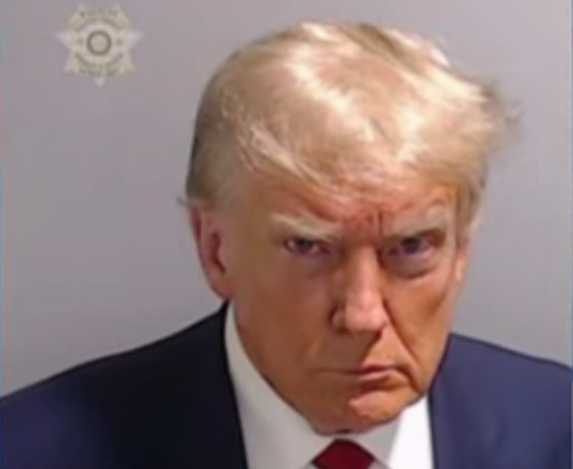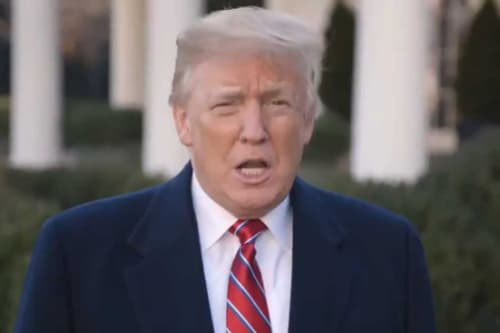Carol Castiel contributed to this story from Washington.
WASHINGTON — A new class of foreign fighter is on the move, flocking by the thousands to a war zone, either looking for adventure or hoping to strike a blow for their cause, in ways that are increasingly getting the attention of Western intelligence officials.
These fighters, though, are not jihadists hoping to join one of the provinces touted by the Islamic State terror group’s virtual caliphate, nor are they aligning themselves with any number of groups affiliated with IS rival al-Qaida.
They are right-wing extremists and white supremacists, and they are traveling to Ukraine in numbers reminiscent of the movement of fighters to Syria in the earliest days of that conflict.
According to a report released Monday by New York-based nonprofit research group The Soufan Center, more than 17,000 people from 50 countries, including the United States, have traveled to Ukraine in recent years to fight both for pro-Ukrainian and pro-Russian forces.
The vast majority, about 15,000, have come from Russia. But the remaining 2,200, researchers warn, bear watching.
“A very significant number are white extremists,” said Jason Blazakis, a senior researcher at The Soufan Center and a professor at the Middlebury Institute of International Studies (MIIS).
“The bulk of those foreign fighters are coming from the near region,” he added, pointing to 800 fighters from Belarus and hundreds more coming from Germany, Georgia, Serbia and dozens of other countries across Europe.
[content id=”79272″]
“That’s, in some ways, not too different than what you saw with ISIS,” Blazakis said, using an acronym for the Islamic State terror group.
White supremacists – a “transnational challenge”
By comparison, in early 2015, the London-based International Center for the Study of Radicalisation (ICSR) had concluded almost 21,000 foreigners from 50 countries – more than half from the Middle East and North Africa – had already traveled to fight in the Syrian civil war, surpassing the up to 20,000 foreigners who had flocked to Afghanistan to fight in the 1980s.
“White supremacy extremism (WSE) is a transnational challenge—its tentacles reach from Australia to Ukraine, and Norway to New Zealand,” The Soufan Center warned in a brief.
“White supremacists are forming global networks, much as jihadis did prior to 9/11, and are learning from jihadi tactics,” the brief said.
And what Syria did for jihadists, Ukraine is doing for white supremacists.
“It’s had a galvanizing effect,” Blazakis said. “It’s given them, for lack of a better word, a playground in which there is turmoil and chaos, a kind of playground that doesn’t exist in a conventional sense in places like the United States.”
One of the most prominent destinations for these fighters is the Azov Battalion, a pro-Ukrainian force that analysts say has embraced neo-Nazi views while targeting right-wing or white supremacist groups around the world for recruitment.
But pro-Russian forces have also found fertile ground for recruiting.
“Serbs from Serbia and Bosnia’s Republika Srpska have mainly joined pro-Russian separatist militias fighting in Eastern Ukrainian,” said Adrian Shtuni, a foreign policy and security analyst who focuses on the Balkans.
“Some are affiliated with Serbian ultranationalist paramilitary organizations,” he said. “Some of them were allegedly hired as mercenaries by the Russian Wagner Private Military Company.”
Shtuni said official estimates suggest up to 300 Serbs have fought in Ukraine since 2014 and that about 30 individuals have already been convicted in Serbian courts.
Russia and rise of far-right
Russia, though, has also been looking beyond traditional allegiances.
“The rise of white supremacy in Western society and far right groups in Europe has been part of a disinformation campaign by the Russian government to contribute directly to that rise,” said Ali Soufan, a former FBI supervisory agent and founder of The Soufan Center.
“They’ve just taken advantage of anything they can do in order to create divisiveness in Western societies,” he said. “And they don’t care if it’s white supremacist, if it’s other groups. They do whatever and they see what works.”
Western officials worry it has been working well enough.
In Europe, intelligence officials see the Kremlin relying increasingly on relationships it has developed with far-right or nationalist political parties that have risen from being fringe groups to major political players.
And this past July, authorities in Italy seized guns, bullets, bayonets and air-to-air missiles, along with Nazi memorabilia, following an investigation into Italians who had been fighting in eastern Ukraine.
The investigation began “because of the activities of some Italian fighters with extremist backgrounds who had taken part in the armed conflict in the Ukrainian region of Donbass,” Italian police said in a statement at the time.
Even countries which have not reported significant numbers of right-wing extremists departing for Ukraine are taking notice.
“We are concerned, although we don’t see yet activities,” Pieter-Jaap Aalbersberg, the National Coordinator for Security and Counterterrorism for the Netherlands, told VOA while visiting Washington Thursday.
“It never stays in one or two countries,” he said, noting the ring-wing and white supremacist propaganda has been spreading quickly on social media.
“On the internet, it’s wider, bigger and heavier,” Aalbersberg said
US-based links
The problem has also gotten the attention of officials in the United States, which has sent more than 30 nationals to fight for either pro-Ukrainian or Pro-Russian forces in Ukraine.
On September 23, the United States charged a soldier stationed at Fort Riley, Kansas, with distributing information on explosives and weapons of mass destruction.
According to court documents, 24-year-old Jarrett William Smith talked to investigators about bombing cell towers and about targeting Antifa members and a local news station.
He also posted on Facebook that he was interested in traveling to Ukraine to join the Azov Battalion.
U.S. officials and researchers have found links between the neo-Nazi Russian Imperial Movement and a California-based white supremacist group, the Rise Above Movement, whose leader was arrested for inciting a deadly riot in Charlottesville, Virginia in 2017.
Kacper Rekawek, head of the national security program at GLOBSEC, a Slovakian-based think tank, believes such connections must serve as a warning that the flow of white supremacist foreign fighters to the conflict in Ukraine, is just the start.
“There is a network. A network produced this mobilization,” he said in a video posted online reduced by the U.S.-based Counter Extremism Project.
Just like the networks that sent jihadists to Syria and Iraq, it is giving those who travel common cause.
“I’ve heard these guys tell me, you know, I don’t care if the guy next to me is from another nationality,” Rekawek said. “He has a similar methodology and ideology and I’m glad he’s going to share a trench with me.”
Rekawek worries, with those barriers broken, the violence may be able to spread more quickly.
“Now the question is whether they take the fight from Ukraine to Europe.”
Some European countries, like the Netherlands, have expressed hope that the same laws they put in place to track and crack down on jihadists going to join terror groups in Syria and Iraq, will allow them to do the same with white supremacist fighters.
But U.S. officials say, for now, unless there is reason to suspect a law was broken, there is not much they can do.
“The conflict in Syria and Iraq was closely tracked because of the unprecedented numbers of foreign terrorist fighters joining ISIS and al-Qaida, which are designated foreign terrorist organizations,” a senior U.S. counterterrorism official told VOA.
U.S.-based groups like the Atomwaffen Division and the Rise Above Movement (R.A.M.), both of which have sought to establish ties with European-based groups, hold no such designation.
Source: VOA







